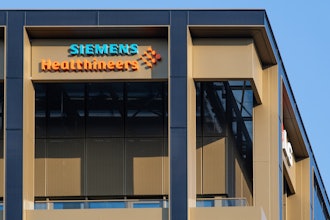
In today's rapidly evolving manufacturing landscape, staying competitive hinges on swiftly and efficiently bringing new products to market. Traditional product development methods, such as the waterfall approach, often prove too slow and inflexible to meet the demands of the modern market. This is where hybrid product development approaches emerge as a compelling solution.
By blending agile and waterfall methodologies, manufacturers can create a flexible and adaptable system that accelerates product delivery and enhances overall success.
The merits of adopting a hybrid approach to product development are manifold and extend significant benefits to manufacturers. Below, we delve into these advantages in greater detail:
- Faster Time to Market: Hybrid approaches empower manufacturers to iterate on their products at a swifter pace while obtaining valuable customer feedback early in the development process. This can lead to substantial reductions in time to market, a critical factor in today's highly competitive manufacturing landscape.
- Improved Product Quality: The collaborative nature of hybrid approaches fosters synergy between different teams and disciplines. This synergy, in turn, translates into superior product design and development, driving overall product quality to new heights.
- Increased Flexibility: Hybrid approaches are inherently more adaptable to change than traditional waterfall methodologies. This adaptability proves invaluable in today's fast-paced manufacturing environment, where market conditions can shift rapidly, necessitating nimble responses.
- Reduced Costs: Hybrid approaches have the potential to significantly trim costs by eliminating waste and inefficiency from the product development process. This heightened efficiency can substantially impact a manufacturer's bottom line.
When Should Manufacturers Adopt a Hybrid Approach to Product Development?
Deciding when to embrace a hybrid approach to product development is a strategic choice that should consider several key factors. Some of the pivotal elements to evaluate include:
- Product Complexity: Hybrid approaches shine brightest when dealing with complex products that require close collaboration between different teams and disciplines. The more intricate the product, the more value a hybrid approach can offer.
- Market Dynamics: Manufacturers operating in rapidly changing markets can particularly benefit from hybrid methodologies. These approaches allow for quick adaptations to shifting market dynamics and evolving customer demands.
- Flexibility Requirements: For manufacturers that need flexibility to adapt to changing market conditions and shifting customer requirements, hybrid approaches provide an effective framework.
Implementing a Hybrid Product Development Approach
While there's no one-size-fits-all formula for implementing a hybrid product development approach, there are essential steps that manufacturers can follow:
- Identify the Optimal Blend: Manufacturers must carefully assess the unique needs of their specific product and market environment to determine the ideal mix of agile and waterfall elements for their hybrid approach.
- Establish Clear Governance and Communication: Setting up clear governance and communication processes is paramount to ensure that the different teams and disciplines involved in the product development process align effectively and work in synergy.
- Leverage Appropriate Tools and Technologies: The right tools and technologies can significantly facilitate implementing and managing a hybrid product development approach. Manufacturers should select tools and technologies that align with their specific requirements.
Case Study
To illustrate the practical benefits of a hybrid approach, let's examine the case of a large industrial machinery manufacturer facing increasing competition from new market entrants. The company needed to develop a new product line to maintain market share and differentiation.
The manufacturer opted for a hybrid product development approach. They employed agile methods to develop the core functionality of the new product line while using waterfall methodologies to finalize the design and establish the manufacturing process.
This hybrid strategy enabled the company to bring the new product line to market in record time. The product line enjoyed resounding success, and the company retained its market leadership position.
Hybrid product development approaches offer a wealth of advantages for manufacturers. They expedite time to market, elevate product quality, enhance flexibility, and reduce costs—attributes highly desirable in today's fiercely competitive manufacturing sector.
Manufacturers operating in complex, fast-evolving markets should seriously consider adopting a hybrid approach to product development. By doing so, they can position themselves as agile, efficient, and innovative players in the industry, primed for continued success.
Product roadmaps play a pivotal role in communicating shifts and monitoring ongoing progress. They offer a unified point of reference that enables all team members to synchronize their efforts and precisely chart their individual tasks.
Maz Adl, CTO and co-founder of Gocious, directs the Southern California-based venture. Gocious is a product roadmap platform for manufacturers, empowering innovation. Maz manages product design, implementation, and development, leveraging a track record of driving automation and digital transformation for competitive advantage.
Discover how Gocious, an industry innovator in manufacturing product management, can further enhance your ability to adapt to change. Schedule your complimentary demo today to explore the possibilities.























